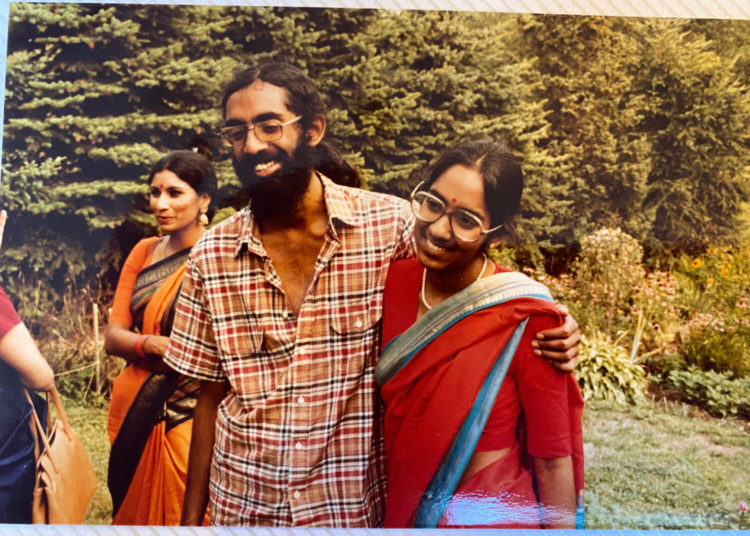“What a headache!” we might say about the stalled subway or the broken printer. It’s shorthand for life’s small indignities, a punchline. It’s also one of the most disabling diseases on Earth.
One in seven people experience migraine’s disabling reach. Millions more, including me, endure other headache disorders. I struggle with cluster headache, the pain of which is often described in the medical literature as among the most severe known to humans. It’s not, I assure you, just a headache. Each attack is an emergency.
Yet basic headache science has long been considered a lowly pursuit for researchers, and one unworthy of the federal government’s vast science war chest. A grim hierarchy, often referred to as “disease prestige,” dictates which afflictions command sympathy and scientific interest and which inspire eye rolls. Headache disorders tend to fall in the eye roll category, and receive far less funding and attention than merited by their impact on society.
Our cultural tendency to cast migraineurs as weaklings may play a role in this. Women are roughly three times more likely to suffer from migraine than men, and the disorder was long trivialized as female hysteria. A recent sociological study from the University of Michigan suggests that people with migraine still evoke outsized social judgment — more so than those with obesity, chronic fatigue syndrome or chlamydia.
The National Institutes of Health lists migraine and headache disorders as producing roughly the same measured disability burden as depression, which also affects a similar number of people. But where depression drew $700 million in N.I.H. funding last year, migraine received only 6 percent as much, or about $41 million — down $8 million from the year prior.
Something in the funding calculus has gone awry when a disorder that also erodes its sufferers’ lives, year after year — interfering with work, grinding them down psychologically with repeated bouts of pain, often causing conditions like depression — is treated as an afterthought.
The drought of research starts with a dearth of researchers who want to study headache, the result perhaps of cultural stigma seeping into scientific institutions. “There’s no question that people who go into neuroscience research have been and are still told, ‘Do not do that. There’s no money there. And it’s kind of embarrassing — and it’s not really science,’” Christopher Gottschalk, a professor of neurology at Yale School of Medicine, told me when I was researching my recent book on the lack of progress in headache science.
The upshot is that scientific and pharmaceutical breakthroughs in migraine have been rare. The family of medications known as the triptans, which arrived in the 1990s, were revolutionary for some but useless for many.
It took a quarter-century to develop a newer, more sophisticated class of drugs, known as C.G.R.P. inhibitors for the pain-related neurotransmitter that they block. These arrived only in 2018, and they were the first drugs ever developed to prevent migraine. While the medications are revolutionary for some, they don’t completely eliminate headaches for most patients; and for a third or more who try them, they offer little or no relief. Many patients are left relying on the off-label use of drugs developed for other conditions — antidepressants, anti-seizure meds, blood pressure modifiers.
Health Secretary Robert F. Kennedy Jr. has pledged to rebalance federal research toward chronic diseases as part of his Make America Healthy Again campaign. His talking points about federal research spending are, by most accounts, overly simplistic if not outright dubious. And yet, his message has resonated among people who feel unseen or dismissed by medicine’s upper echelons.
If Mr. Kennedy is serious about improving the nation’s health care return on investment, migraine would be an excellent place to start. Tens of billions of dollars are spent each year treating migraine — and that’s just in health care costs. A 2020 industry analysis pegged the indirect cost of migraine in the United States at $19.3 billion — mostly attributed to missed work. Factor in the hours spent pushing through pain or medication fog, and the figure balloons. Recouping even a fraction of that amount, via well-funded science and improved interventions, would be an economic windfall.
Solving the riddle of migraine and related headache disorders will not be simple. Migraine involves a still mysterious tangle of neurons and blood vessels, hormones and neurochemicals, waves of cortical depolarization and genetic predispositions. Yet that complexity is no excuse for inertia. If the disease were rare, we might accept its mystery. But with 45 million Americans in its grip, the dearth of progress looks less like scientific humility and more like neglect.
Headache advocacy groups, sensing a rare moment of potential receptivity in Mr. Kennedy and the wider MAHA movement, are already making appeals — including a letter to both Mr. Kennedy and President Trump in April, which underscored the need for pediatric migraine research in particular. And there are other signs of a potential political awakening. Last month, a bipartisan bill to create a national headache initiative was introduced in Congress — the first ever aimed specifically at migraine and other headache disorders.
The bill may or may not survive the usual gauntlet of congressional distraction, but Mr. Kennedy doesn’t need a mandate to act. If he wants to Make America Healthy Again, in part by redirecting medical research toward America’s most pervasive chronic ailments, migraine is a ready test. Here is a common, disabling and economically costly disease whose mechanisms remain underexplored — largely because of institutional bias. And the solution isn’t so much a moonshot as it is low-hanging fruit: a relatively modest investment in basic neuroscience and clinical translation that could pay off many times over in restored productivity, reduced medical visits and sheer human relief.
Tom Zeller Jr., a former New York Times editor and reporter, is editor in chief of the digital science magazine Undark. He’s also the author of “The Headache: The Science of a Most Confounding Affliction.”
The Times is committed to publishing a diversity of letters to the editor. We’d like to hear what you think about this or any of our articles. Here are some tips. And here’s our email: [email protected].
Follow the New York Times Opinion section on Facebook, Instagram, TikTok, Bluesky, WhatsApp and Threads.
The post Your Headache Is Serious. Science Should Take It Seriously. appeared first on New York Times.




